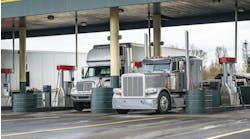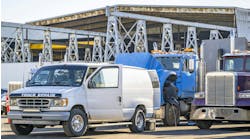If the future is anything like the past, I can almost guarantee there will be some sort of pre-buy ahead of the 2027 Environmental Protection Agency’s emissions regulations. Ever since the 2010 EPA emissions regulations, some fleets have altered their vehicle purchasing cycles to avoid what is typically the increased cost of new equipment that meets the latest emission regulations. Sometimes the decision to pre-buy pays off, but sometimes it doesn’t.
There is no blanket advice about whether to change normal purchasing cycles to align with upcoming emission changes. Each fleet needs to make a decision about how to best handle the new emissions regulations based on their own unique operating parameters.
My suggestion is that fleets spend some time looking out over a three-to-five-year period focusing on where they think the hits are going to come from on the pricing side of new equipment. But they should also address what happens to their CapEx budgets if they deviate from their normal buying cycles as well as how changing buying cycles will impact other areas of the business. In addition, fleets need to look at the implications of a pre-buy on the used-truck market because used-truck values are one factor in a vehicle’s total cost of ownership. The review needs to be thorough and cover a wide range of factors.
See also: EPA launches $1 billion clean heavy-duty vehicle transition grant program
Fleet managers who decide that pre-buying is the best strategy then need to decide when they will begin buying vehicles. Will it be as soon as this year, or does it make sense to wait until 2025 or 2026? Fleets also need to be aware of truck production volumes. If the truck makers don’t build enough trucks to meet all the pre-buy demand, fleets may not be able to get all the trucks they want, forcing them either to purchase new equipment to meet the new emissions standards or hold onto existing equipment for a longer period than usual.
The decision to change buying cycles involves a lot of factors, so it is not as simple as it appears.
That’s why it’s worth spending some time modeling various scenarios to see which path makes the most sense for your fleet, not only in the short term but in the long term as well.



